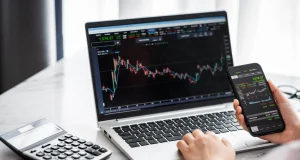
Forex analysis can be a good way for anyone looking to make money in the highly volatile and fast-paced market. Though profits are never guaranteed in trading, many have found certain levels of success. With so many different approaches and methods available, knowing which ones will yield the best results in Singapore can be overwhelming. In this article, we’ll look at the most popular forex analysis methods used in Singapore today and discuss which are most likely to yield profits.
To learn more about the currency pairs available for trading, you can check out Saxo Markets.
Technical analysis
At its core, technical analysis is a tool that uses historical price information to predict future price movements. It looks at patterns of trading activity as well as trends that may indicate where prices might move next.
Technical analysts use indicators such as moving averages, Fibonacci levels, support and resistance levels, and other charting tools to identify potential setups. Although technical analysis can help traders anticipate price movements, it is not a guarantee of accuracy.
Fundamental analysis
Fundamental analysis looks at the underlying economic and political forces that drive markets. It looks at a country’s economic health, industry trends, and geopolitical events to identify which currencies are likely to move in the future.
Fundamental analysts use news releases such as gross domestic product (GDP) reports, interest rate decisions, unemployment data, and inflation rates to determine their forecasts for currency pairs. Unlike technical indicators, fundamental analysis does not provide special buy or sell signals but gives investors an overall view of the market’s direction.

Sentiment analysis
Sentiment analysis studies the emotions of traders and investors to identify potential trends. It can be used to gauge whether there is bullish or bearish sentiment in the market, and it can also act as an early warning system for significant shifts in investor confidence. Sentiment analysis looks at media reports, analyst recommendations, insider trading activity, and other indicators to measure overall market psychology.
Market cycle analysis
Market cycle analysis uses historical price data to identify patterns that indicate when markets are likely to move up or down. This type of analysis looks for buying and selling cycles that repeat over time, such as booms and busts. Market cycle analysts may use Fibonacci levels or Elliot Wave theories to try and identify these patterns. Market cycle analysis can be used to anticipate significant market moves, although it is not a guarantee of accuracy.
Quantitative analysis
Quantitative analysis uses mathematical models and algorithms to identify potential trading opportunities. This analysis looks at volatility, liquidity, and momentum to determine when markets will likely move up or down. It can help traders identify entry points and risk levels and which currency pairs may offer the best return on investments.
Quantitative analysis requires considerable knowledge of financial mathematics, so it is often reserved for more experienced traders who have the resources to invest in sophisticated software programs and data sets.
Which method is best?
The best analysis method will depend on the individual trader and their risk tolerance, trading goals, and resources at their disposal. Technical analysis is an excellent tool for short-term traders, while fundamental and sentiment analysis can be helpful for those looking to take a long-term approach. Quantitative analysis may be the most suitable choice for experienced traders with access to sophisticated software programs and data sets. Ultimately, it is up to the individual trader to decide which method works best for them.
Should you use a broker?
If you are starting forex trading, using a reputable broker is a good idea. A broker will provide market access and help guide you through making trades. They can also provide valuable advice on which analysis methods may be most suitable for your individual needs.
At the end of the day
Forex analysis is essential for anyone looking to make money in the foreign exchange market. There are many different methods available, each with its advantages and disadvantages. Technical analysis helps identify patterns in price movements, while fundamental and sentiment analysis can help predict future trends.
Market cycle analysis can identify recurring buying and selling patterns, while quantitative analysis uses sophisticated algorithms to find potential trading opportunities. Ultimately, it’s up to you to decide which methods will work best for your trading style.




